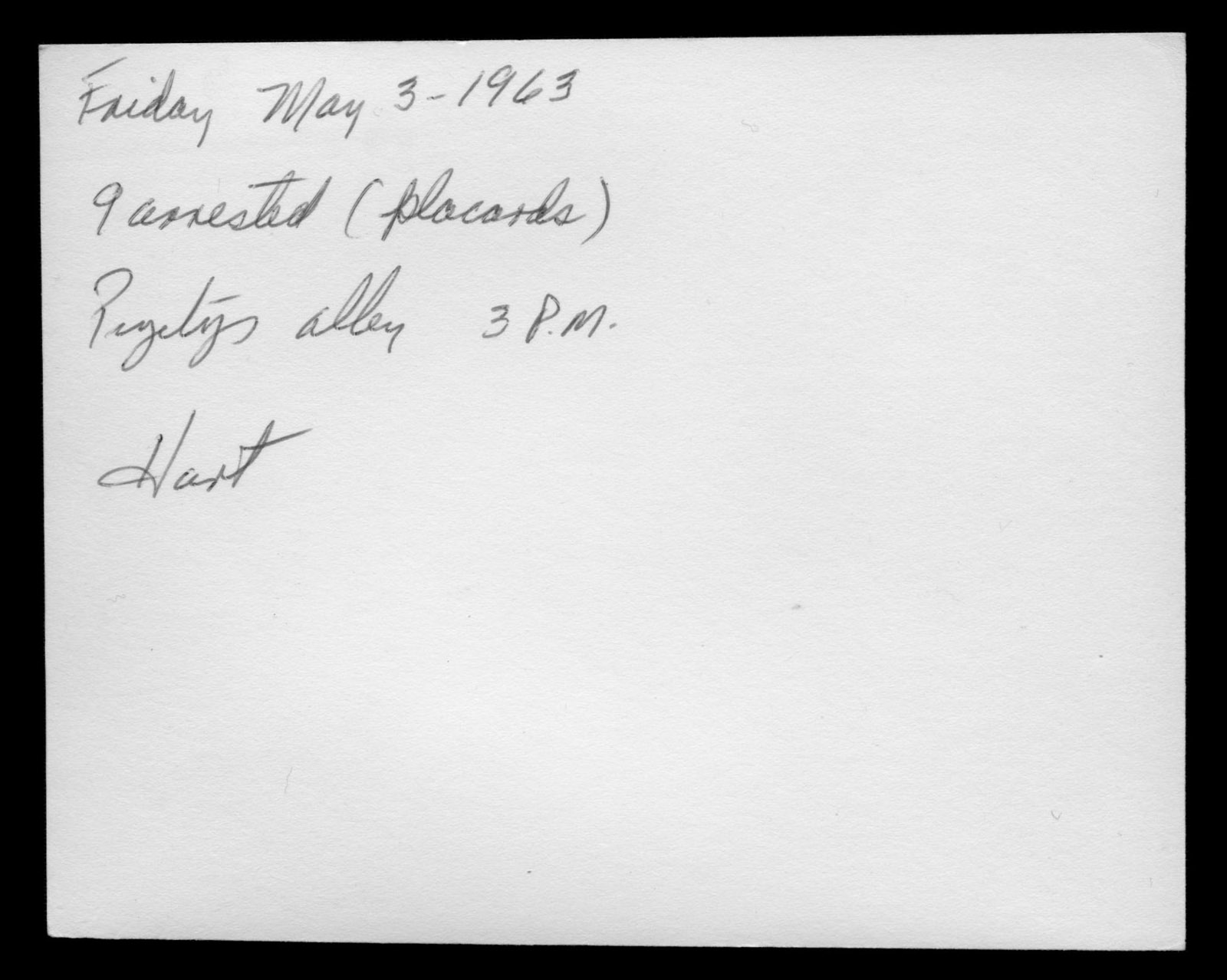UNTITLED
(Friday May 3 - 1963 / 9 arrested (placards) / Pizitz’s alley 3 P.M. / Hart)Archival pigment print diptych
Presented as a diptych and made in response to Hans-Peter Feldmann’s Homework (or Do It Yourself) (1996), Untitled (Friday May 3 - 1963 / 9 arrested (placards) / Pizitz’s alley 3 P.M. / Hart) was made part of the ongoing international traveling exhibition, do it, at the Mobile Museum of Art, January 26–July 1, 2018.
Hans-Peter Feldmann’s Homework (or Do It Yourself) (1996):
Look for a photo of a person who seems likeable or attractive... The photograph might be found in a variety of places: magazines, flea-markets, a family photo album. In any case, you must take great care in the search, which will continue until your intuition tells you that you’ve found the right photo. However, it is important that the person you choose is a complete stranger. You take this photo and choose a frame according to your taste, as with any home decoration. This can be a wall frame or a standing frame, or possibly a case that you carry around. Having brought this photo into your daily life, and now looking at it frequently, you should, as often as you like, think about who this person might have been, about what his or her life may have been like, about the cause of his or her death. You should find out how close you can get to this person, and at what point you would give him or her a name...
About do it:
Since its initiation in 1993 by Hans Ulrich Obrist and artists Christian Boltanski and Bertrand Lavier, do it has become the longest-running and most far-reaching exhibition ever to have happened – constantly evolving and generating evermore relevant new versions of itself. do it has toured to venues from New York to Manchester, Budapest to Salt Lake City, and Kosovo to Moscow. The origin and transformation of do it reflects the necessity of exploring collaboration and shared authorship in a constantly evolving art world. The project’s impetus is rooted in the extraordinary effects of globalization on curating and artistic practice in the 1990s, a time that witnessed an unprecedented expansion of the geographies of contemporary art. Twenty years later, do it has taken place in 60+ venues worldwide and includes nearly 400 artists from across the globe, giving new meaning to the concept of an exhibition in progress, while offering infinite creative possibilities for participating audiences everywhere.
.....................................
In 2013 I received an unmarked box containing photographs made by Birmingham Police detectives in April-May of 1963 to surveil and document individuals involved in civil rights demonstrations.
Cropped and enlarged from a May 3, 1963 photograph of a group of students detained for carrying placards, a young man stares into a detective's camera, a slight smile on his face. More than 1000 children were arrested over May 2-3, as dogs and water hoses were turned on the student demonstrators. Most were carried away in paddy wagons and school buses and held overnight in juvenile detention or in the overcrowded county jail. The unwavering, non-violent, celebratory demeanor of the students dumbfounded police. Dr. Martin Luther King, Jr. told parents, "Don't worry about your children who are in jail. The eyes of the world are on Birmingham. We're going on in spite of dogs and fire hoses. We've gone too far to turn back."

Untitled (Friday May 3 - 1963 / 9 arrested (placards) / Pizitz’s alley 3 P.M. / Hart); archival pigment print diptych 48x30” and 24x30” edition of 3

Untitled (Friday May 3 - 1963 / 9 arrested (placards) / Pizitz’s alley 3 P.M. / Hart); detail
.....................................